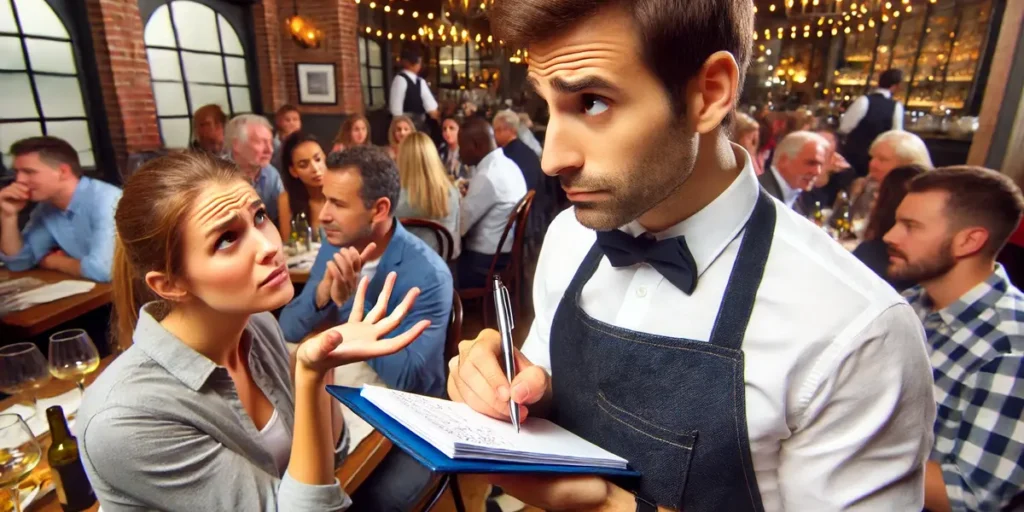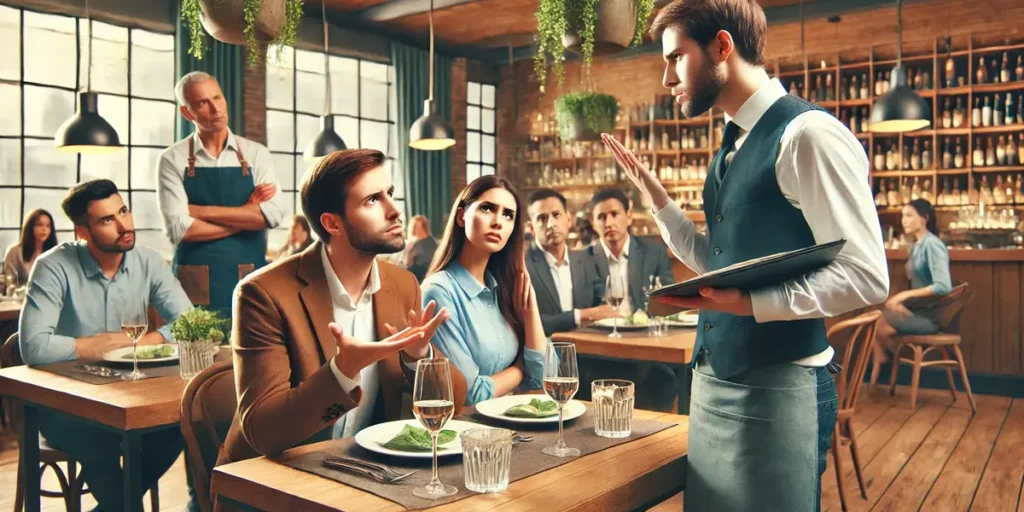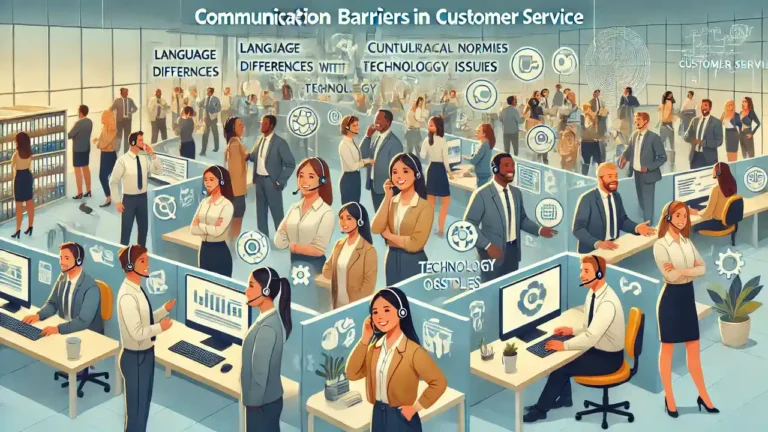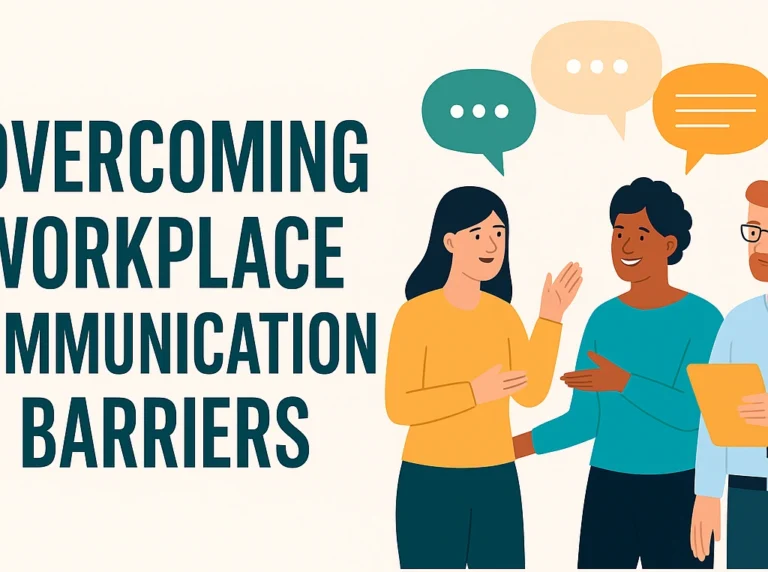Communication Barriers in Restaurants
Communication in restaurants is a multifaceted challenge that touches every aspect of the dining experience. From a bustling, noisy environment to language differences and cultural mismatches, each barrier can create a domino effect that impacts both customers and staff. In this article, we explore the various communication barriers, support our discussion with industry research and expert insights, and provide actionable strategies that restaurant managers can implement to ensure an exceptional customer experience.
Understanding Communication Barriers in Restaurants
Imagine a restaurant on a busy Saturday night. The energy is high, the chatter is constant, and the clatter of dishes creates a rhythmic background noise. Yet, amidst this orchestrated chaos, a single miscommunication can result in a wrong order or, worse, an unhappy customer. This scenario underscores the importance of clear and effective communication.
Language Differences

Restaurants today often serve a diverse clientele, and this diversity extends to the staff as well. Language differences can be a significant source of error. For instance, a server who speaks limited English may misinterpret a customer’s dietary restrictions, leading to a disastrous outcome. A 2022 study by the National Restaurant Association revealed that language barriers can contribute to a 15% increase in order errors citeturn0search0. Clearly, language is not just a tool for communication; it is the gateway to understanding customer needs.
To address these challenges, restaurants can implement bilingual or trilingual menus. Moreover, language training programs for staff are not merely a luxury but a necessity. Integrating translation apps or hiring multilingual employees further minimizes the chances of miscommunication. These measures not only bridge the gap but also create a more inclusive environment where every customer feels understood and valued.
Background Noise
The atmosphere of a restaurant plays a pivotal role in how information is transmitted and received. Background noise—from lively conversations to the hum of kitchen appliances—can muddle verbal communication, causing orders to be repeated or misunderstood. A sudden clamor from the kitchen or a burst of laughter can easily drown out a quiet request from a customer.
However, noise control does not have to be an insurmountable problem. By installing sound-absorbing materials and optimizing the physical layout, restaurants can create quieter dining areas. When the environment is conducive to clear communication, both staff and patrons benefit from reduced misunderstandings. Would you believe that even simple design modifications can dramatically improve the overall dining experience?
Unclear Instructions
Precision matters when it comes to taking and relaying orders. A vague instruction—such as asking for a “medium steak”—might leave the chef guessing whether to prepare it medium-rare or medium-well. This ambiguity not only affects the taste of the meal but can also erode customer trust. In such cases, the clarity of communication is as critical as the flavor of the dish.
To prevent such issues, it is essential that staff be trained to ask clarifying questions. When a customer says, “I’d like my steak medium,” a simple follow-up such as, “Do you mean medium-rare or medium-well?” can eliminate any ambiguity. This practice not only ensures the correct preparation of the dish but also demonstrates a commitment to customer satisfaction.

Cultural Differences
Cultural diversity enriches the dining experience, yet it can also lead to communication challenges. Cultural norms vary widely, and what might be a polite inquiry in one culture could be perceived as intrusive in another. For example, in some cultures, customers expect servers to engage in detailed explanations of the menu, whereas in others, a succinct order is preferred.
Cultural sensitivity training can play an essential role in bridging these differences. Educating staff on varying communication styles helps them adapt to the unique preferences of their clientele. By acknowledging and respecting these cultural nuances, restaurants can not only avoid miscommunication but also build lasting relationships with customers from all walks of life.
Emotional State of Staff
The emotional well-being of restaurant staff is paramount to effective communication. When employees are stressed or fatigued, even routine interactions can become challenging. A tired server may miss a key detail in an order, and a stressed chef might misinterpret a complex request. In these situations, the human element of service can suffer, resulting in errors that are entirely preventable.
Investing in staff well-being, such as through regular breaks, wellness programs, and supportive management practices, can mitigate these risks. When employees feel valued and rested, they are more likely to communicate clearly and work efficiently. In a fast-paced restaurant environment, maintaining high morale is just as important as perfecting the menu.
The Role of Technology
Technology offers incredible potential to streamline restaurant operations, yet it also introduces new challenges. Digital ordering systems, for instance, are designed to reduce errors but sometimes fail to capture non-verbal cues that can signal a customer’s specific needs. Technical glitches or unfamiliarity with the system can exacerbate communication issues, especially during peak hours.
Restaurants can address these concerns by adopting user-friendly systems and providing comprehensive training for their staff. Regular technical maintenance and the integration of translation features in digital devices can further improve the accuracy of orders. When technology works in harmony with human interaction, it creates a seamless experience that benefits everyone involved.
Non-verbal Cues
Non-verbal communication, such as facial expressions, gestures, and body language, often conveys more than words alone. A slight smile or a raised eyebrow can communicate satisfaction or confusion, respectively. However, when these cues are misinterpreted, the resulting miscommunication can lead to service errors that affect the customer experience.
To improve non-verbal communication, training sessions should include modules on interpreting and using body language effectively. For example, role-playing exercises can help staff learn how to read customer signals and respond appropriately. By enhancing awareness of non-verbal cues, restaurants can ensure that subtle signals are not lost amid the noise of a busy service.
Impact on Restaurant Operations
The repercussions of poor communication in restaurants extend far beyond a single order error. When communication breaks down, the entire operation suffers.
Customer Satisfaction
Effective communication is directly linked to customer satisfaction. When diners experience miscommunications—whether through language barriers, unclear instructions, or poor non-verbal cues—they are likely to feel frustrated and undervalued. Such experiences can lead to negative reviews and a decline in repeat business. Imagine the disappointment of a guest who eagerly anticipates a special dish, only to receive an entirely different meal due to a simple miscommunication.
Staff Efficiency
Communication issues can also have a profound impact on staff efficiency. When orders are misunderstood, valuable time is wasted correcting errors and clarifying details. A study by Hospitality Insights in 2021 noted that improving communication can boost operational efficiency by up to 20% citeturn0search0. Clear and concise communication not only speeds up service but also reduces the stress on employees, ultimately leading to a smoother, more productive work environment.
Error Rates and Operational Costs
Inaccurate orders result in wasted food, increased operational costs, and a decline in overall service quality. Miscommunications may lead to repeated orders, wasted ingredients, and a higher error rate, all of which can significantly inflate costs. By addressing communication barriers, restaurants can reduce these errors, save resources, and improve their bottom line.

Strategies to Overcome Communication Barriers
Addressing communication challenges requires a multifaceted approach. The following strategies offer actionable steps that restaurants can implement immediately.
Staff Training and Development
Regular training is crucial. Staff training sessions should cover language basics, cultural sensitivity, and non-verbal communication. Role-playing scenarios provide a practical way to simulate real-life situations, enabling staff to gain hands-on experience. Inviting industry experts for workshops or webinars can further enrich these training sessions. Ultimately, comprehensive training not only reduces misunderstandings but also fosters a culture of continuous improvement.
- Actionable Steps:
- Organize monthly training sessions.
- Incorporate role-playing and interactive modules.
- Invite guest speakers from the hospitality industry.
Implementing Multilingual Menus and Signage
Catering to a diverse clientele is essential. Restaurants should develop menus and signage in multiple languages based on the demographics of their customer base. Adding pictorial representations and clear graphics enhances understanding and reduces language-related errors. These efforts make every guest feel welcome, regardless of their native language.
- Actionable Steps:
- Research customer demographics to determine language needs.
- Create menus with multiple language options.
- Use visual aids to supplement written descriptions.
Leveraging Technology Effectively
Digital solutions can be a game changer. By integrating advanced ordering systems equipped with multilingual support and user-friendly interfaces, restaurants can streamline the ordering process. Staff should receive comprehensive training on these systems to ensure they can navigate potential technical challenges seamlessly. Regular system updates and maintenance further reduce the risk of errors.
- Actionable Steps:
- Invest in digital ordering systems with robust support features.
- Schedule regular training sessions for all technical tools.
- Ensure technical support is available during peak hours.
Creating Effective Feedback Mechanisms
Feedback is invaluable. Establishing multiple channels for feedback—such as comment cards, online surveys, and in-person interviews—enables managers to identify recurring issues and address them promptly. Regularly reviewing and acting on this feedback fosters an environment of continuous improvement, where every voice is heard and valued.
- Actionable Steps:
- Distribute feedback forms after service.
- Monitor online review platforms and social media.
- Hold regular staff meetings to discuss customer insights.
Strengthening Management Oversight
Management plays a pivotal role in ensuring effective communication. Leaders should develop clear, comprehensive communication protocols and enforce them consistently. By monitoring the effectiveness of these protocols and making necessary adjustments, managers can ensure that all strategies remain relevant and effective over time. Moreover, open dialogue between management and staff creates a transparent and supportive work culture.
- Actionable Steps:
- Establish and document clear communication policies.
- Hold periodic review sessions to assess policy effectiveness.
- Encourage open feedback from staff on communication issues.
A Closer Look at the Broader Impact
When communication barriers are overcome, the benefits ripple through every aspect of restaurant operations. For example, a restaurant that invests in regular staff training and adopts multilingual menus not only reduces errors but also enhances the dining experience for every customer. In such an environment, the staff is empowered to manage high-pressure situations, and customers are treated with respect and understanding—a win-win scenario that ultimately improves profitability and reputation.
Furthermore, the integration of advanced technology paired with human insight creates an atmosphere where both precision and personal touch coexist. In this balanced environment, even when unexpected challenges arise, clear protocols and a supportive team ensure that solutions are implemented quickly and effectively.
Real-Life Success Stories
Consider the case of a popular urban bistro that once struggled with order errors due to language barriers and unclear communication. After conducting a thorough assessment and incorporating the strategies mentioned above, the restaurant introduced bilingual menus, provided regular language training, and revamped its feedback mechanisms. As a result, the error rate dropped significantly, customer satisfaction improved, and staff morale soared. This success story demonstrates that with the right approach, even deeply ingrained communication issues can be effectively resolved.
In another instance, a high-end restaurant integrated digital ordering systems alongside traditional face-to-face service. While the technology initially posed challenges due to unfamiliarity, targeted training and constant technical support transformed the system into a valuable asset. The restaurant experienced fewer miscommunications and a smoother flow of operations, underscoring the importance of technology when used thoughtfully.
Conclusion
Addressing communication barriers in restaurants is not a one-time effort but a continuous process that requires dedication and innovation. Every restaurant, whether small or large, can benefit from implementing the strategies outlined above. By focusing on staff training, leveraging technology, and fostering an environment of open feedback and cultural sensitivity, restaurant managers can transform communication challenges into opportunities for excellence.
The journey toward improved communication is as much about the people as it is about the systems in place. When managers lead by example and invest in their teams, the entire organization benefits. Effective communication not only reduces errors and enhances customer satisfaction but also builds a resilient, dynamic, and inclusive work culture. This transformation is vital in today’s competitive market, where every interaction can shape a customer’s overall dining experience.
Restaurants that adopt these best practices will not only see a reduction in order errors and operational costs but will also develop a loyal customer base that appreciates the attention to detail and genuine care in service. Ultimately, the key to success lies in understanding that communication is not merely a transactional tool—it is the very foundation upon which memorable dining experiences are built.






